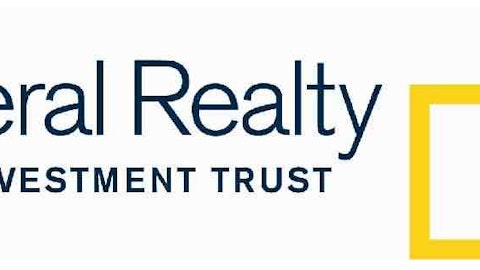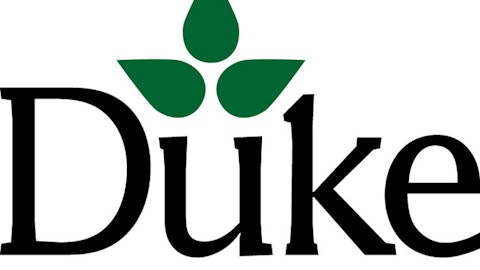Realty Income grows its real-estate portfolio with stock acquisitions, which allows it the freedom to send virtually all of its cash flow back to shareholders.
It is in acquisitions that Realty Income really shines. Despite the fact that share count has grown from 71 million shares in 2003, to 196 million shares as of the last quarter, the company’s dividends per share have grown in every single year, up from $1.20 per year 10 years ago, to $2.179 per share in expected dividends in 2013, for an average of 6.1% per year.
Other net-lease retail REITs like National Retail Properties, Inc. (NYSE:NNN) haven’t kept up with Realty Income’s dividend growth. During the 2003-2013 period, National Retail Properties, Inc. (NYSE:NNN) increased its dividend only modestly to the tune of just 2.3% per year. The company is a veritable dividend growth stock, however, as it has a consistent record of small dividend increases going back 24 consecutive years.
National Retail Properties, Inc. (NYSE:NNN) is just as aggressive in acquisitions. Share count grew from 43 million shares in 2003, to 112 million in 2013, but its acquisition strategy hasn’t led to robust dividend growth when compared to Realty Income’s success.
How it plays in your portfolio
When property values and commercial rents rise, Realty Income investors make money. As a shareholder, you should root for low, but sustained, inflation, which drives rental increases while having only a modest effect on the company’s cost of borrowing.
In the best-case scenario, interest rates should be lower than reported CPI-U inflation, because rental increases are largely based on that index’s readings. When interest rates rise faster than inflation, Realty Income’s borrowing costs surge higher than its annual rent increases, driving down total returns.
Investing is never without its risks. Because Realty Income focuses on retail property, changes in business-to-consumer commerce have a big impact on earnings. The rise of Amazon and eBay present a long-term risk to the business model, as shoppers turn online to make purchasing decisions. Likewise, the decline of offline retailers like Best Buy, Sears, or J.C. Penney could free up millions of retail square feet, driving down prices in local markets. The company’s long-term leases help displace some of this risk, however.
The company is best suited for investors who want monthly income from commercial real estate exposure. Consider it a convenient proxy for real estate investing: You don’t have to pick your own properties, or find tenants. As a public shareholder, you just have to wait for the monthly dividend payments to roll into your brokerage account. The hands-off appeal and diversified portfolio is why so many investors prefer Realty Income as an income play from commercial real estate.
The article How Realty Income Corp (NYSE:O). Makes Money originally appeared on Fool.com is written by Jordan Wathen.
Fool contributor Jordan Wathen has no position in any stocks mentioned. The Motley Fool recommends Amazon.com and eBay. The Motley Fool owns shares of Amazon.com and eBay.
Copyright © 1995 – 2013 The Motley Fool, LLC. All rights reserved. The Motley Fool has a disclosure policy.




